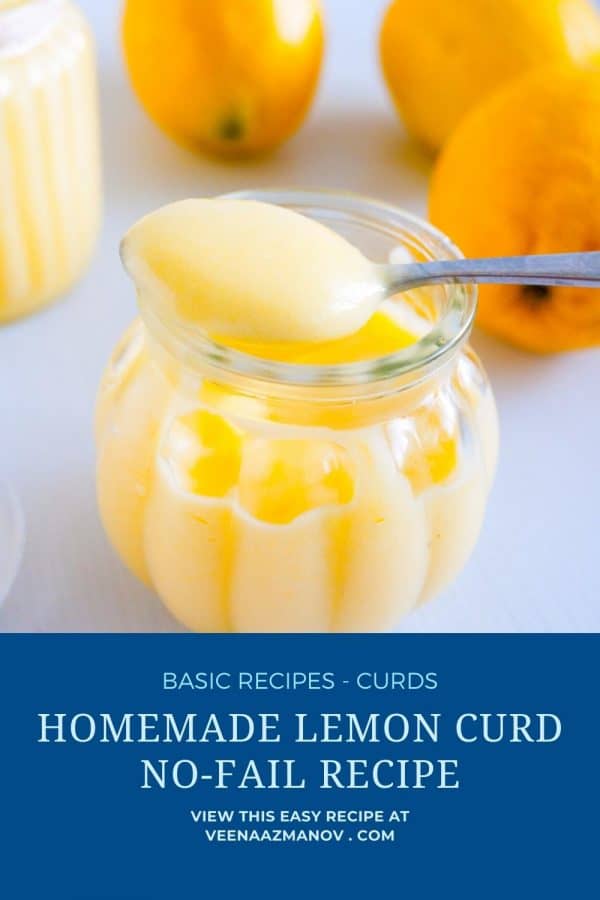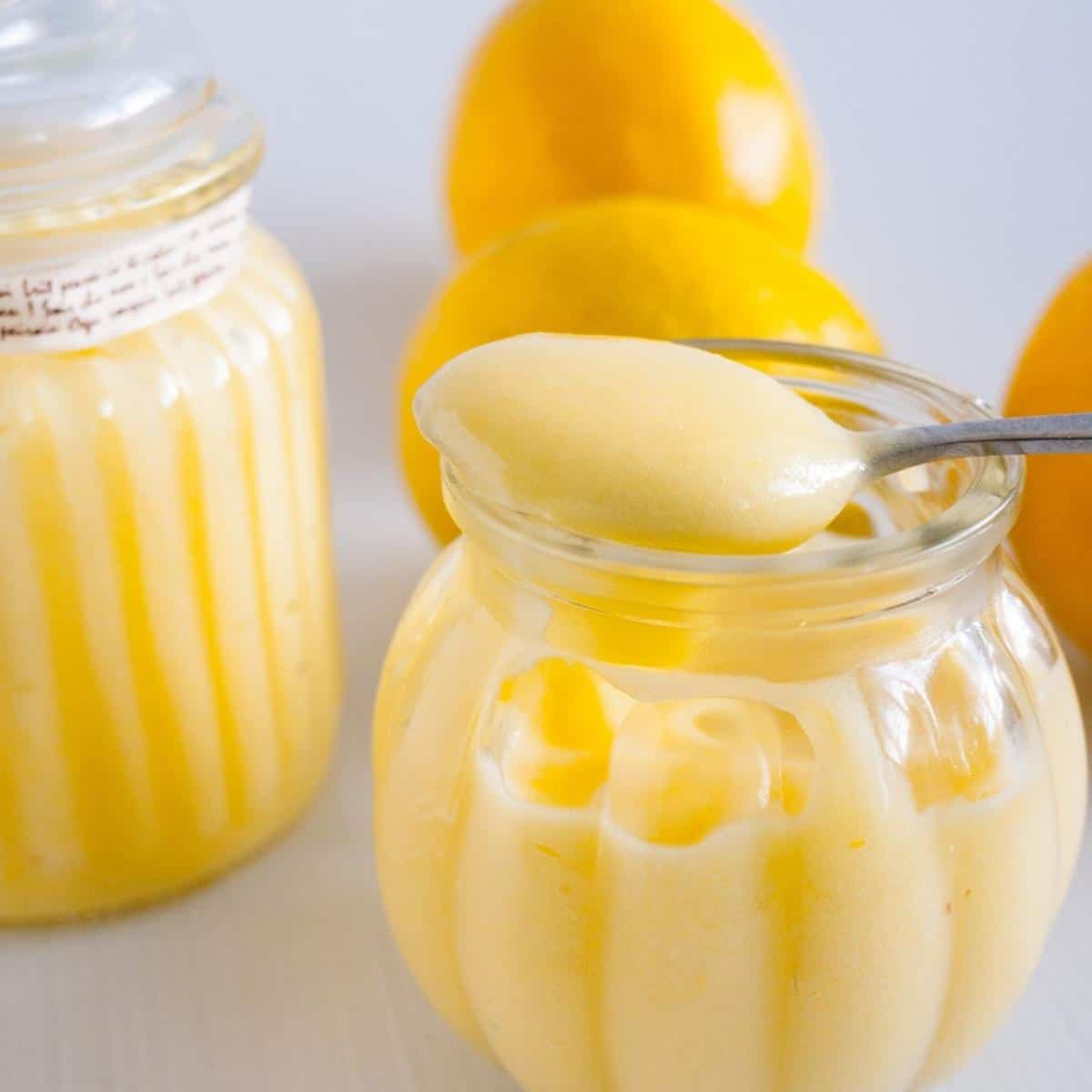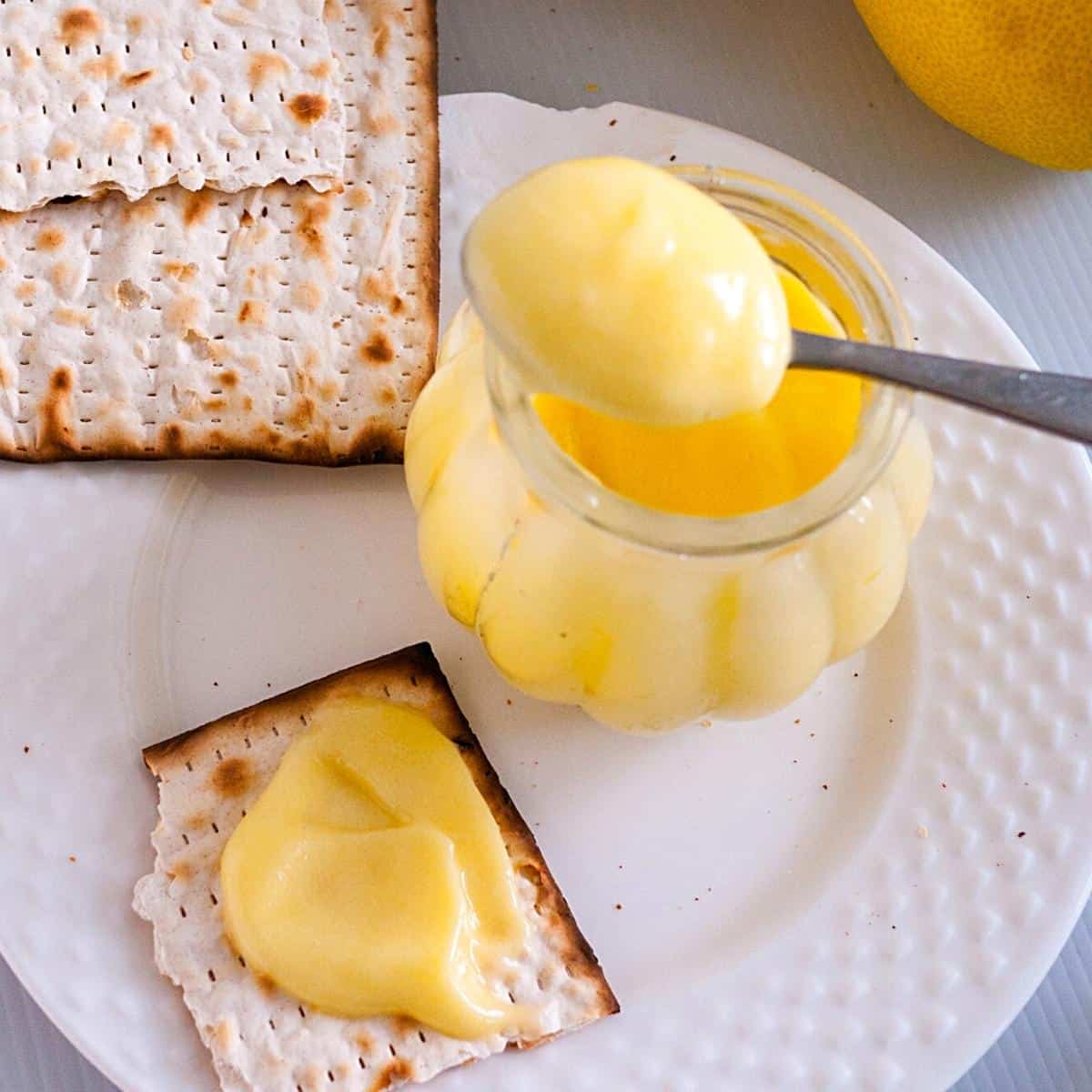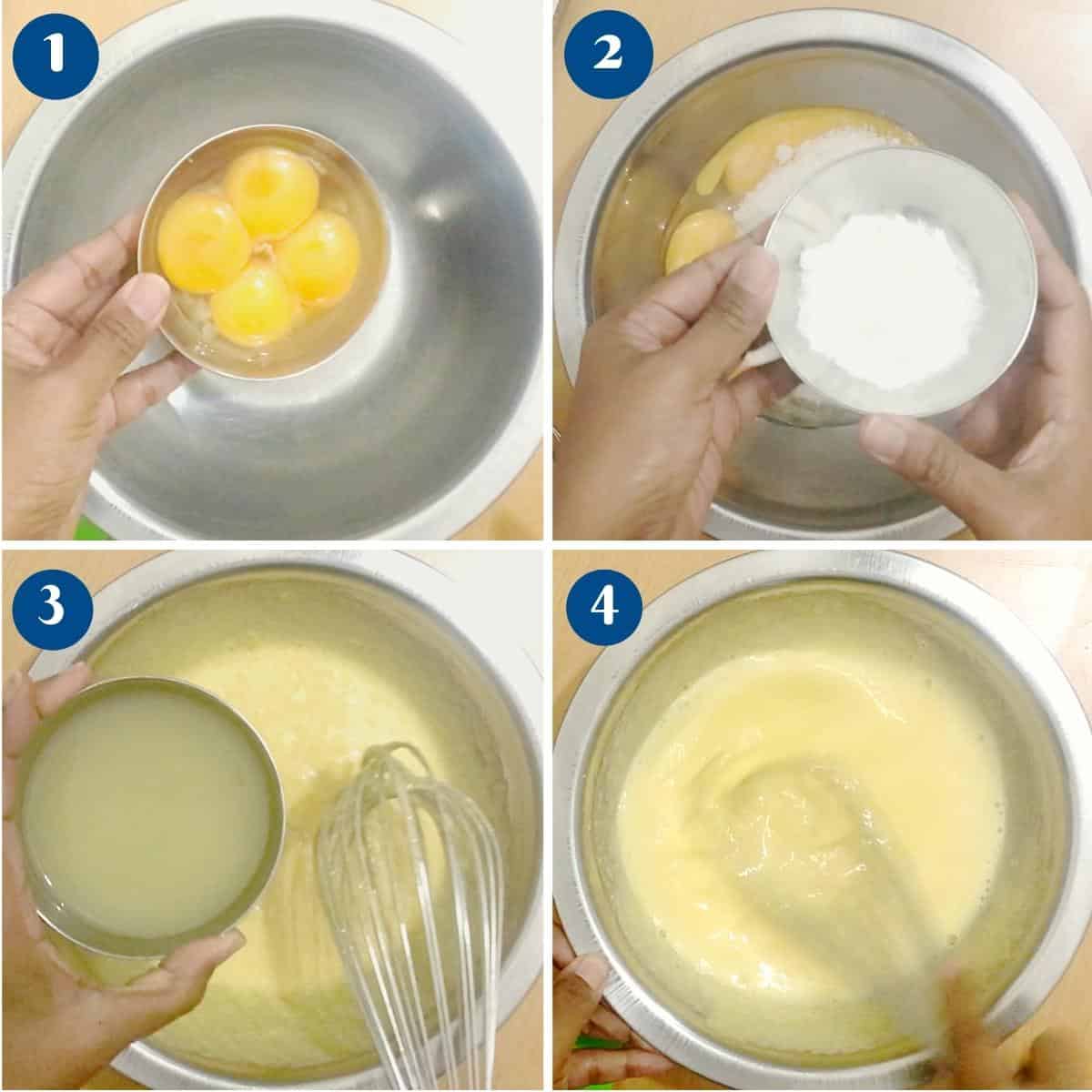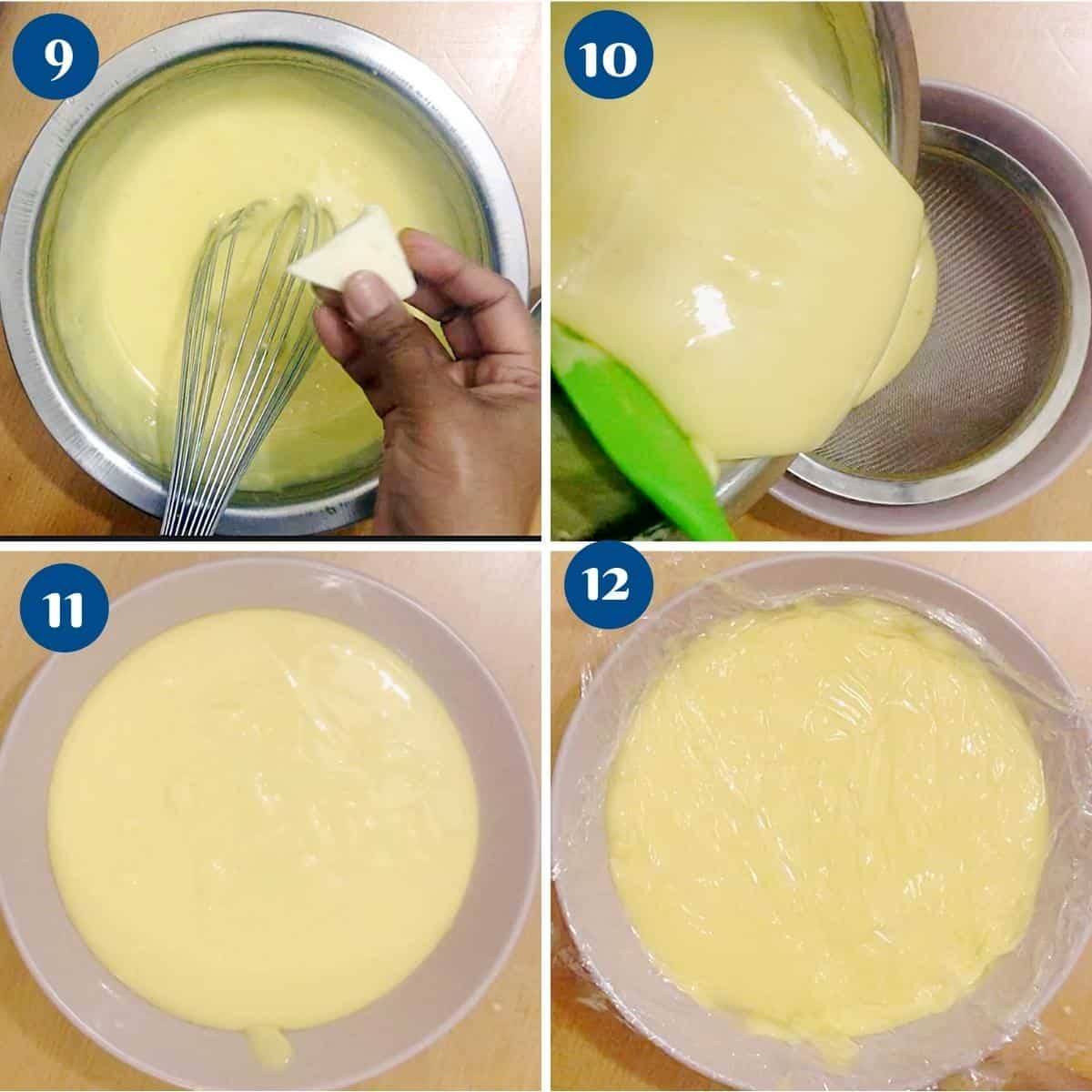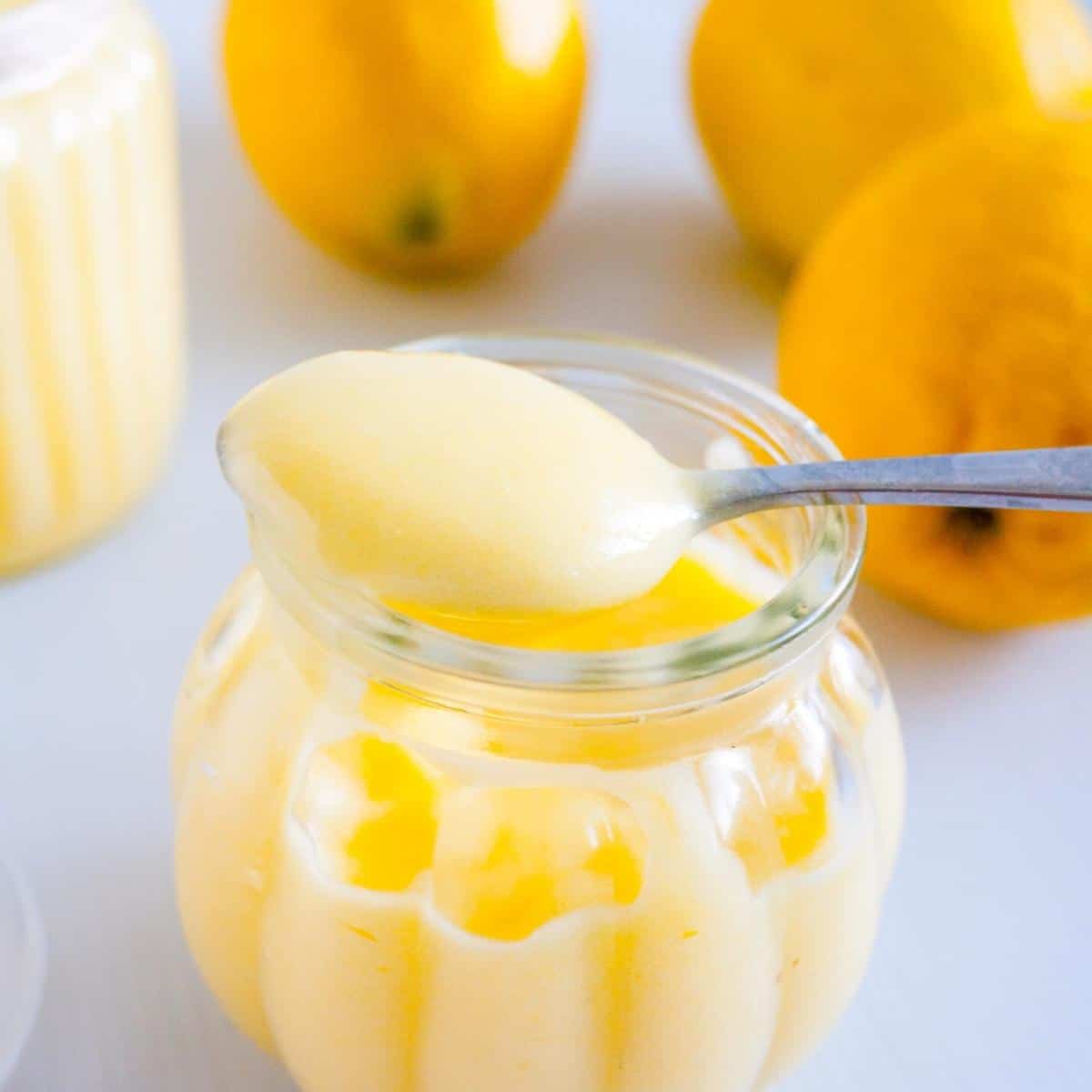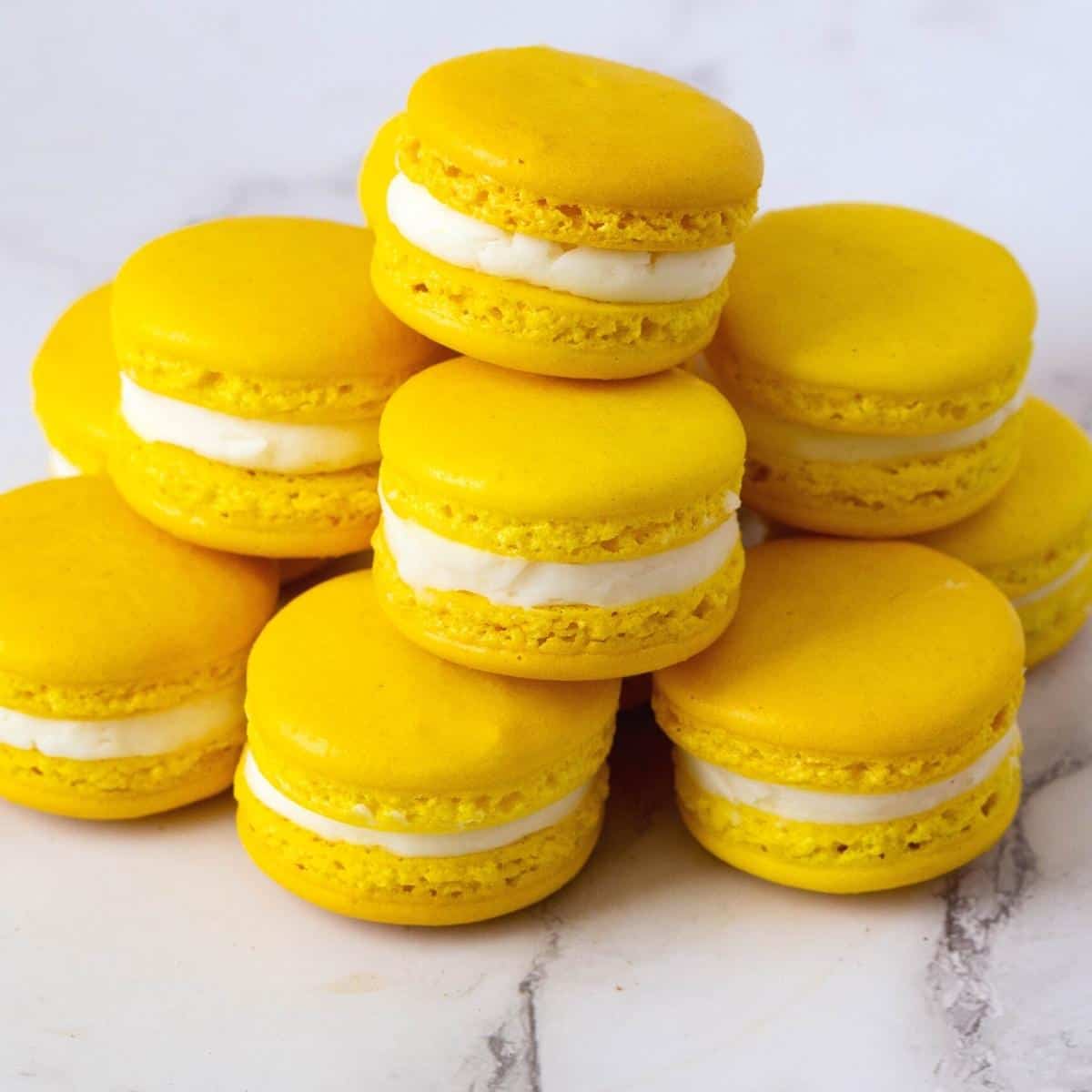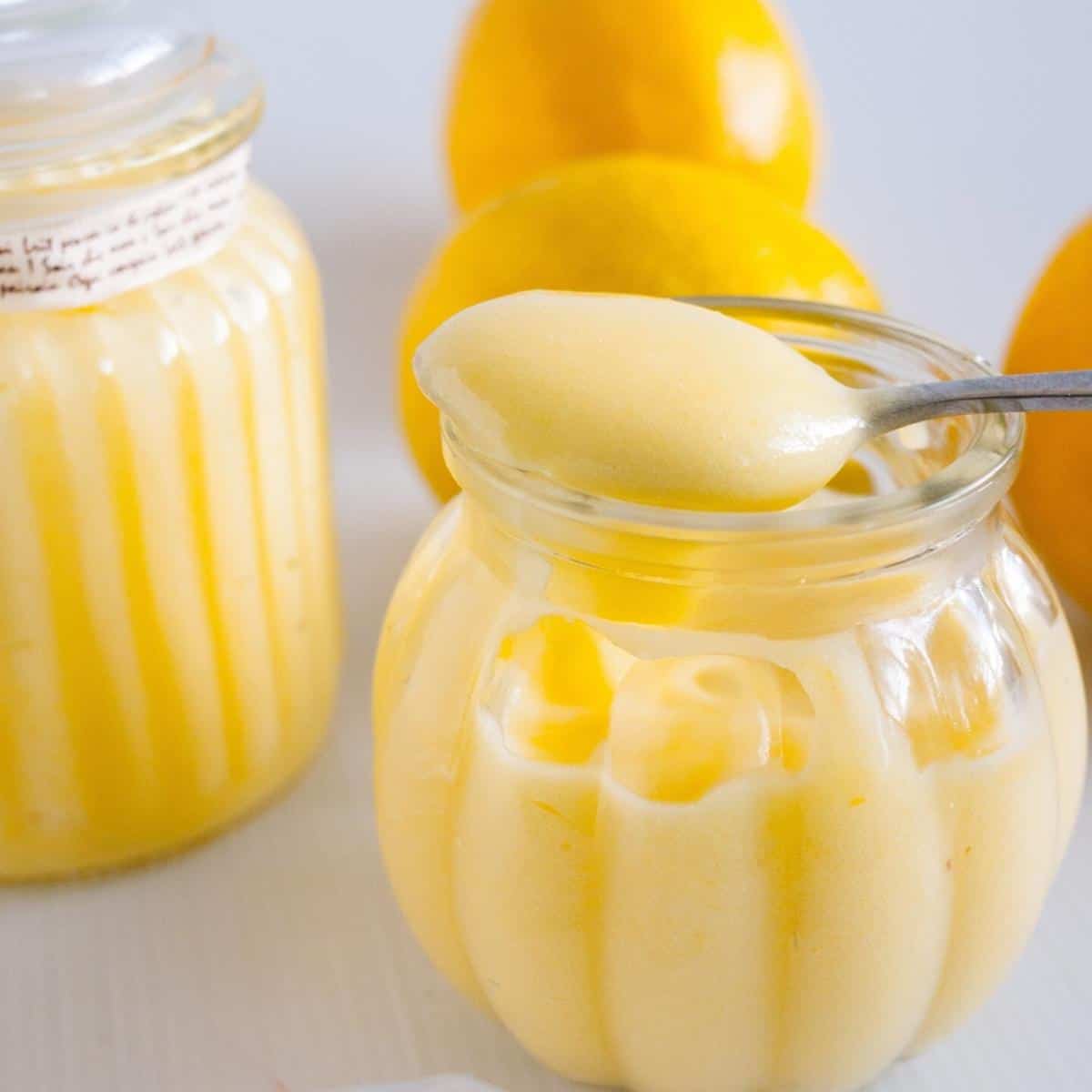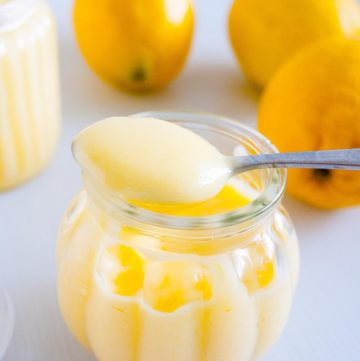Lemons, with their vibrant yellow hue and invigorating aroma, are a quintessential ingredient in the culinary world, revered for their versatility and ability to enhance both sweet and savory dishes. Bursting with tangy flavor and refreshing acidity, lemons are the star of many beloved recipes, none more cherished than the classic lemon curd. Lemon curd, a luscious and silky spread, encapsulates the essence of lemons in every bite. This delightful concoction is a harmonious blend of tart lemon juice, fragrant zest, creamy butter, and rich eggs, sweetened to perfection. The process of making lemon curd is a beautiful alchemy of cooking science and artistry. As the mixture gently cooks, it transforms from a liquid state into a thick, velvety curd, capturing the bright and zesty notes of fresh lemons. In particular, I love it as a filling in my lemon macaron with lemon buttercream. Of course as filling in a lemon cake. Perfect fruit filling for spreading on scones, filling tarts, layering in cakes, or simply enjoyed by the spoonful, lemon curd is a testament to the magic of lemons. Its balance of sweetness and tartness makes it a versatile addition to any kitchen, elevating everyday treats into extraordinary delights. Whether you’re a seasoned cook or a novice baker, crafting homemade lemon curd is a rewarding experience that brings the sunny, vibrant flavors of lemons into your home.
Step-by-step: No-fail lemon curd recipe
Prepare Ingredients: Zest the lemons and then juice them to get the required amount of lemon juice. Set aside. Cut the butter into small pieces and keep it in the refrigerator until needed.Pro tip: Place lemons in the microwave for 10 seconds before you cut and squeeze; this will make it easier to juice and also give you more juice.
Egg mixture: In a medium saucepan, whisk together the granulated sugar and cornstarch until well combined. This helps prevent the cornstarch from clumping when liquid is added. Add Lemon Juice and Zest: Gradually whisk in the fresh lemon juice and zest until the mixture is smooth and free of lumps.Pro tip: warm the lemon juice in the microwave for 20 seconds this will prevent the eggs from curdling. Cook the Mixture: Place the saucepan over medium heat and cook the mixture, stirring constantly with a whisk or a heat-resistant spatula. Be sure to scrape the bottom and sides of the pan to prevent the mixture from sticking and curdling. Cook Until Thickened: Continue to cook the lemon mixture until it thickens enough to coat the back of a spoon. This should take about 7-10 minutes. The mixture should be smooth and glossy.
Add Butter: Remove the saucepan from the heat and immediately add the cold butter pieces, stirring until the butter is completely melted and incorporated into the curd. This will give the lemon curd a rich and silky texture. Strain the Curd: For an extra smooth curd, pour the mixture through a fine-mesh sieve into a clean bowl. This will remove any bits of cooked egg or lemon zest that might have clumped together during cooking. Cool and Store: Allow the lemon curd to cool to room temperature, then cover it with plastic wrap directly on the surface to prevent a skin from forming. Refrigerate the curd for at least 2 hours before using or until it is fully chilled and set.
Storage
Store the lemon curd in an airtight container or mason jars in the refrigerator for up to two weeks. It can also be frozen for up to three months. Thaw it in the refrigerator overnight before using it. Avoid keeping fruit curd or citrus fillings in metal containers as the lemon can react with the metal. Eggs can react with metals such as aluminum and cause them to become green in color.
Troubleshooting Lemon Curd
Curdled or Scrambled Eggs: The eggs cooked too quickly and turned into scrambled eggs. Cook the mixture over medium heat, stirring constantly. If the heat is too high, the eggs can curdle. If you notice any curdling, immediately remove the pan from the heat and continue stirring vigorously. Lumpy Texture: The lemon curd has lumps, possibly from cornstarch or cooked egg bits. Always strain the finished curd through a fine-mesh sieve to remove any lumps. Make sure to whisk the sugar and cornstarch thoroughly before adding the liquid to avoid clumping. Too Thin or Runny: The curd didn’t thicken properly. Ensure the curd is cooked long enough for the cornstarch and eggs to thicken the mixture. It should coat the back of a spoon. If it remains runny after cooling, return it to the stove and cook it a bit longer, stirring constantly. Too Thick: The curd is too thick and possibly overcooked. If the curd becomes too thick, you can thin it out by whisking in a small amount of additional lemon juice or water until the desired consistency is achieved. Overly Sour or Bitter: The lemon curd is too sour or bitter. Make sure to measure the lemon juice accurately and taste the mixture before cooking. If it’s too sour, add a bit more sugar. A bitter taste can come from using too much lemon zest or getting a white pith in the zest. Use only the outer yellow layer of the lemon peel. Skin Forming on Curd: A skin forms on top of the lemon curd as it cools. To prevent a skin from forming, press a piece of plastic wrap directly onto the surface of the curd while it cools. This will prevent air from reaching the surface and forming a skin.
No-Fail Orange Curd Recipe Fruit fillings – strawberry, raspberry, blackberry, blueberry, cherry, Sauces – caramel sauce, creamy caramel filling, butterscotch, dulce de leche Mousse – chocolate, strawberry, custard, blackberry, chestnut
Frequently asked questions
Creative ways to use lemon curd
Lemon Curd Tart: Use the lemon curd as a filling for a tart, either in a pre-baked pastry shell or a no-bake crust. Top with fresh berries or whipped cream for a delicious dessert. Lemon Curd Thumbprint Cookies: Make thumbprint cookies by pressing your thumb into cookie dough balls before baking and filling the indentations with lemon curd after baking. and Lemon Curd Layer Cake: Use the lemon curd as a filling between cake layers for a refreshing citrus twist to a classic cake. Lemon Curd Pancakes: Swirl lemon curd into pancake batter before cooking for lemony pancakes. Serve with fresh berries and powdered sugar. Lemon Curd Yogurt Parfait: Layer lemon curd with Greek yogurt and granola for a tasty and refreshing breakfast or dessert. Lemon Curd Ice Cream: Swirl lemon curd into homemade or store-bought vanilla ice cream for a tangy twist. Lemon Curd Trifle: Layer lemon curd with whipped cream and pound cake or ladyfingers for a light and refreshing dessert. Lemon Curd Cheesecake: Swirl lemon curd into a cheesecake batter before baking for a lemony cheesecake. Top with whipped cream or berries.
Thank you for sharing - Save for later


